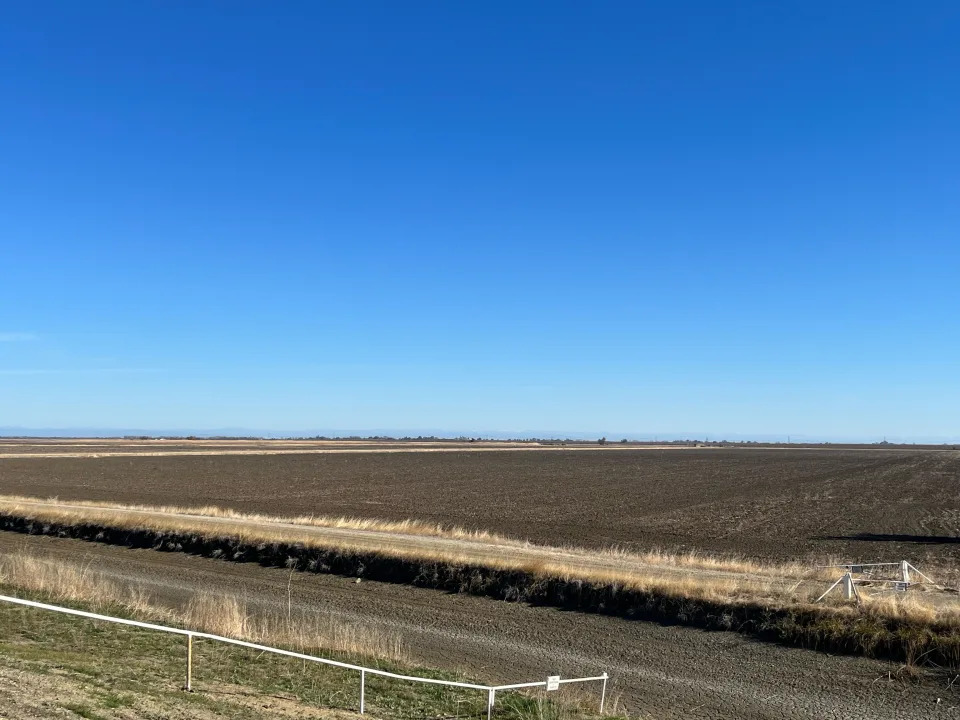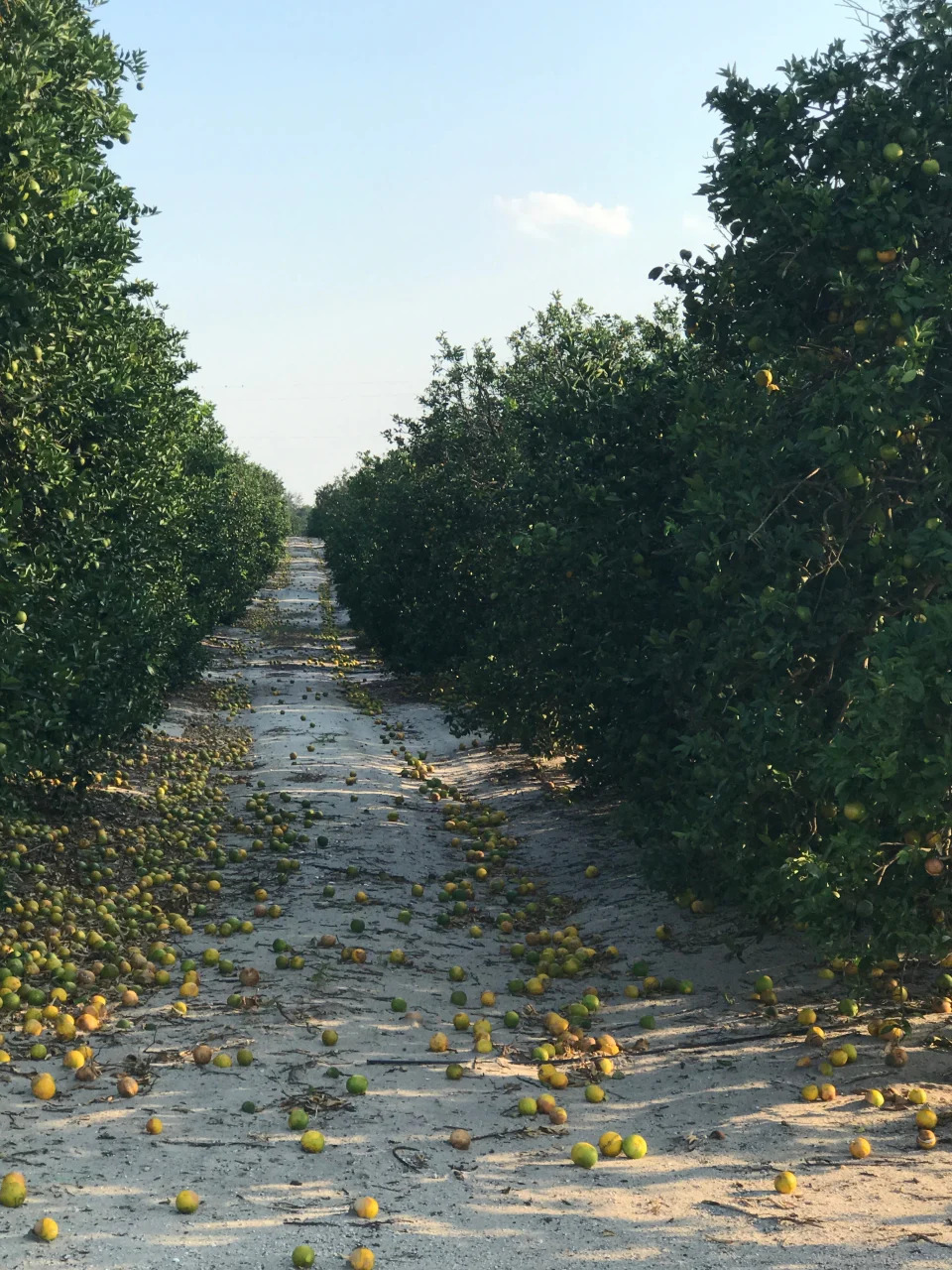USA Today
Weird weather hit cattle ranchers and citrus growers in 2022. Why it likely will get worse.
Elizabeth Weise, USA TODAY – December 8, 2022
This has been a year of extreme weather, including ruinous floods, horrific hurricanes, unrelenting heat, drought and massive rainfall events. Farmers, always at the mercy of the weather, have taken a hit.
In 2022, so far there have been over a dozen climate disaster events with losses exceeding $1 billion, according to the National Oceanic and Atmospheric Administration.
While harvests in the U.S. overall have been good, some crops were devastated.
In Texas, the cotton harvest was hit hard by drought. Hurricane Ian blew oranges off the trees in Florida. Rice farmers in California have left fields empty for lack of water, and cattle ranchers are sending more cows to slaughter because drought-stunted pastures can’t support normal calving activity.
Climate change can’t be directly blamed for every bad harvest or extreme weather event this year, but the effects of climate change – including drought and rainier hurricanes – hurt harvests across the nation in 2022. Climate models make clear more is coming.
It’s a pattern scientists have been warning about for decades, that higher global temperatures will bring on “weather weirding.”
Every year the farmers who feed our nation get smarter and more resilient, but it’s increasingly stressful to adapt to the extreme variability they face, said Erica Kistner-Thomas, with the U.S. Department of Agriculture’s National Institute of Food and Agriculture.
“One year they’ll have the best year ever and then the next year they’ll be hit with a major flooding event or drought,” she said.
Here are some crops for which 2022 was a hard year:
Rice in California
The “megadrought” in the West, the worst in 1,200 years, has had an enormous impact on farming in California. Seven percent of the state’s cropland went unplanted due to lack of water for irrigation.
Rice, which relies on surface water, was hardest hit. Over half the state’s rice acres went unplanted, according to the USDA.

“Rice is a major crop in California. We lead the nation in medium and short grain acres,” said Gary Keough with the National Agricultural Statistics Service.
“A significant number of acres were not planted just because of a lack of water,” he said.
In Colusa County north of San Francisco, fifth-generation rice farmer Sean Doherty was able to plant only four of his usual 20 rice fields.
“I’ve never experienced a year like this,” he said. “There’s just no comparison to other years whatsoever.”
READ: What is climate change?
There was so little water that his fields, which normally would have held thousands of pounds of premium sushi rice, are instead bare dirt. “Just to keep my guys busy we re-leveled some fields to improve water efficiency,” he said. But no amount of efficiency helps when there’s simply no water to be had.
“You can’t conserve your way out of an empty bucket,” Doherty said.
At least for now Doherty is doing all right because he has crop insurance. But that won’t help the businesses in his county that depend on farmers to survive. “My crop dusters don’t have insurance; my parts store and fertilizer dealers, they’ve got no business,” he said.
Citrus in Florida
Hurricane Ian hit John Matz’s orange and grapefruit groves hard. He lost over 50% of his crop from it being blown off the trees.
“It’s pretty disgusting to look at the amount of fruit that was on the ground,” the grower in Wauchula, Florida, said.

The winds were only the beginning. Standing water damaged root systems. Even now, when the waters have receded and the fallen fruit has been counted for insurance purposes, more bad news is coming, said Roy Petteway, president of the Peace River Valley Citrus Growers Association.
“Trees are very sensitive; they’re not like squash or cucumber,” he said. “You might not see the full extent of the damage for eight months to a year.”
He’s not convinced that human-caused global warming is behind the weather shifts he’s seeing, but there is definitely change in the land his family has held for generations in Zolfo Springs, Florida.
“I’m 36, and I’ve gotten through three once-in-a-lifetime storms.” he said.
How is climate change affecting the US?: The government is preparing a nearly 1,700 page answer.
HURRICANES: Is climate change fueling massive hurricanes in the Atlantic? Here’s what science says.
But after six generations in Florida, he’s not about to give up. “We don’t know how to fail. There’s a reason there’s an orange on our license plates.”
Florida mostly grows citrus for juice, so there shouldn’t be a big impact on consumer fruit prices, said Ray Royce, with the Highlands County Citrus Growers. But every time there’s a storm that damages the crops, it’s one more blow to U.S.-produced fruit.
“Replacement juice will be brought in from Brazil and Mexico,” he said. “At some point for processors it’s cheaper to ship it in. All the juice you drink now is a blended product of domestic and offshore juice.”
Cattle in Texas
Look for beef prices to rise in 2023 and 2024 – in part because drought in Texas is forcing ranchers to send more cows to slaughter.
“There isn’t enough grass to eat, and it’s become too expensive to buy feed. We’ve had a large amount of culling this year because of drought,” said David Anderson, a livestock specialist at Texas A&M University.
“We’re sending young female heifer cows to feed lots because we don’t have the grass to keep them,” he said. Cows that would normally have a calf in the next few years are instead going to slaughter.
Beef slaughter is up 13% nationwide and in the Texas region, it’s up 30%.
“In the short term, that means beef will be cheaper. This year we’re going to produce a record amount of beef, over 28 million pounds,” said Anderson.
But long term it will mean higher prices.
Those calves that might have been born in the spring of 2023 would be ready for slaughter in about 20 months. So in the fall of 2025, there will be fewercattle to slaughter and higher prices.
“There’s going to be a shortage of beef, and prices are probably going to go up,” said the USDA’s Kistner-Thomas. “This could also have a compounding effect on other meat prices as people switch from beef to chicken.”
Today, Texas has about 14% of the nation’s beef cow herd but as the climate changes, ranchers will face growing challenges.
“These events are getting more frequent,” said Anderson. The state’s experiencing more frequent severe droughts. And when the rains do come, they come differently than before, in intense bursts rather than over a longer period of time.
“You may get the same total rainfall, but you’re going to get it all in one afternoon,” he said. “The plants are adapted for one pattern, and we’re not going to have that pattern anymore.”
More: How a summer of extreme weather reveals a stunning shift in the way rain falls in America.
Almonds in California
This year’s marzipan for Christmas won’t be affected, but next year’s might be, given the one-two punch California’s almond groves took this year.
First, an unseasonable freeze in the last week of February killed some of the fruit just as it was forming. Then the ongoing Western megadrought forced farmers to choose between which trees could get enough water to actually produce.

Some farmers are getting out of the business entirely or watering trees just enough to keep them healthy but not enough for good harvests — hoping for more water in the future, said Richard Waycott, CEO of the California Almond Board.
“Generally speaking, you grit your teeth and bear it.”
The United States produces 82% of the world’s almonds, almost all in California. In 2022, the harvest was down 11% from the year before. This year’s production is expected to drop as much as 2.6 billion pounds.
Cotton in Texas
Texas is the largest cotton producer in the United States, but this year’s drought has cut the harvest by at least a third, said John Robinson, a professor and specialist in cotton marketing at Texas A&M University in College Station, Texas.
“This year they’re projecting less than 4 million bales; in an average year it’s 6 million,” he said. “Cotton was planted, then it just didn’t even come up. There was a whole lot of land that was simply plowed up because the seeds never germinated.”
That’s called the “abandonment rate,” the percentage of unharvested acres compared to total planted acres. This year’s abandonment rate for cotton in Texas is 68%, “which is a record,” said Robinson.
What does climate change mean for the future of US farming? Preparation is key.
Things would have been much worse if it weren’t for advances in plant breeding, said Paul Mitchell, a professor of agriculture and applied economics at the University of Wisconsin, Madison.
“Crops are more resilient to dry weather than they were 20 years ago,” he said.
As the kind of severe weather events that can devastate crops become more frequent, better breeds won’t necessarily be able to save farmers, said Ariel Ortiz-Bobea, an economist at Cornell University who studies how agriculture is coping with environmental change.
“U.S. agricultural productivity is rising, but it’s not becoming more resilient to extremes,” he said. “When bad years start to line up, are we doing things to prepare for the unusual as it becomes more usual?”
Elizabeth Weise covers climate and environmental issues for USA TODAY. She can be reached at eweise@usatoday.com.
